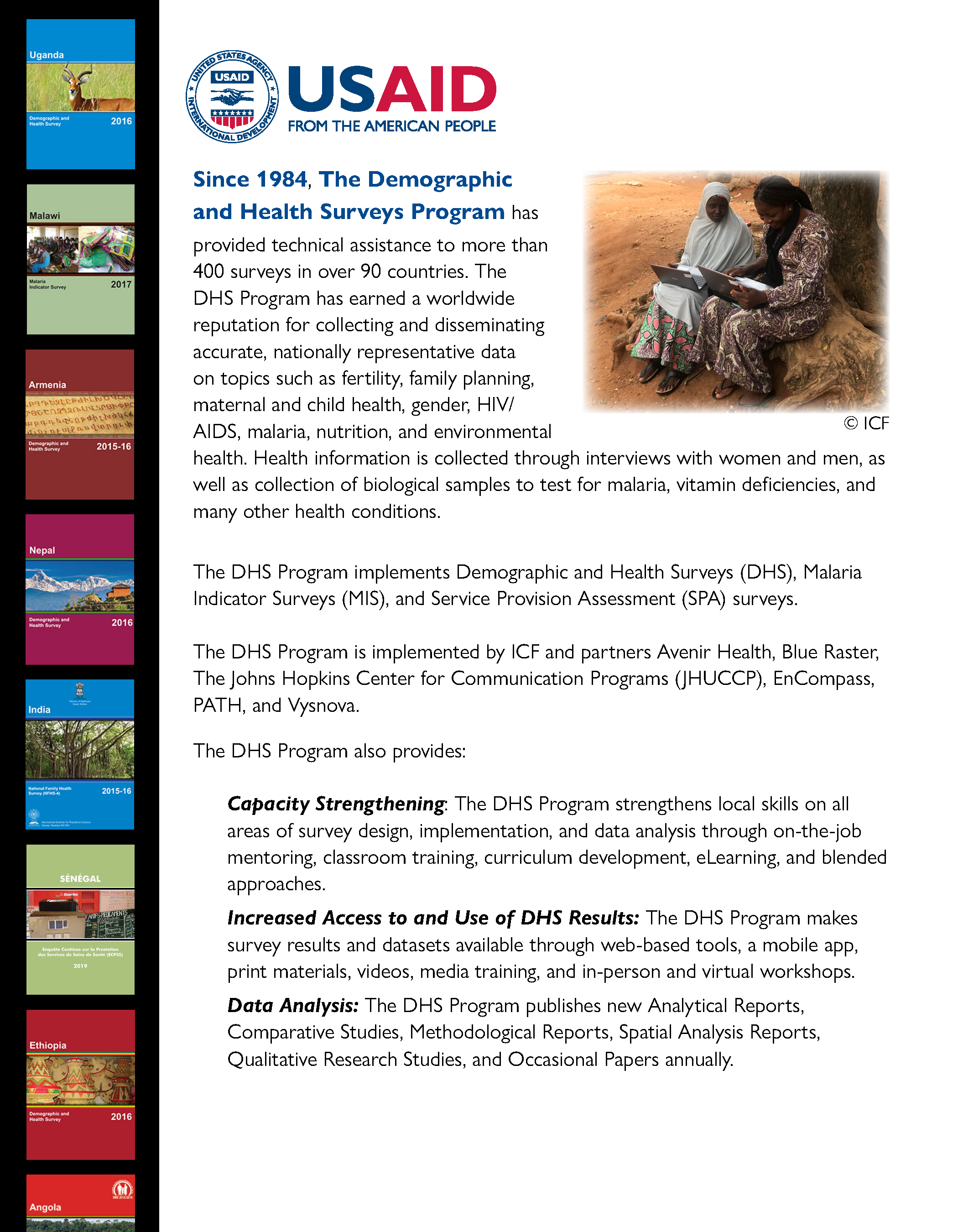Press Releases
HIV prevalence decreases in 6 countries
Calverton, Maryland, USA
HIV prevalence has decreased in Burkina Faso, Cameroon, the Dominican Republic, Malawi, Tanzania, and Zimbabwe, according to the new “HIV Prevalence Estimates” report released by the USAID-funded MEASURE Demographic and Health Surveys (DHS) project. MEASURE DHS now has HIV prevalence data based on representative, population-based surveys for 35 countries. For the 13 countries in which two rounds of HIV testing have been carried out, HIV prevalence has dropped in the six listed above.
Fifteen percent of women and men age 15-49 in Zimbabwe are currently HIV-positive, down from 18% in the 2005-06 Demographic and Health Survey. Prevalence dropped among both women and men and in both urban and rural areas. Similarly, overall infection rates dropped in Burkina Faso, from 1.8% in 2003 1.0% in 2010-11; in Cameroon, from 5.5% in 2004 to 4.3% in 2011; in the Dominican Republic, from 1.0% 2002 to 0.8% in 2007; and in Tanzania, from 7.0% in 2003-04 to 5.8% in 2007-08. In Malawi, the decrease was seen only among men age 15-49, from 10.2% in 2004 to 8.1% in 2010.
HIV prevalence has also decreased among the youngest group surveyed, those age 15-19. In 5 countries - the Dominican Republic, Burkina Faso, Tanzania, Lesotho, and Zimbabwe - HIV prevalence dropped among 15 to 19 year-olds. This suggests that fewer new infections are occurring in these countries. In Lesotho, for example, almost 8% of young women age 15-19 were HIV-positive in the 2004-05 survey; in 2009, this proportion had dropped to just over 4%. Surveys were unable to detect changes in HIV prevalence in the other seven countries - Ethiopia, Kenya, Lesotho, Mali, Rwanda, Senegal, and Zambia.
“In this review of 13 countries, DHS surveys have found that HIV prevalence has decreased in 6 countries and has remained basically unchanged in 7 others. We are encouraged to see that HIV prevalence isn’t increasing as many people feared,” noted Dr. Sunita Kishor, Director of the MEASURE DHS project.
Trends in HIV prevalence are difficult to interpret. HIV prevalence measures only the population who are currently infected with HIV. A drop in prevalence, therefore, does not indicate whether there are fewer new infections in a population or whether rates are decreasing due to increased deaths of HIV-positive people. Conversely, an unchanging HIV prevalence rate could be due to fewer new infections in addition to more HIV-positive individuals living longer on anti-retroviral therapy.
“DHS data do not tell us why HIV prevalence has decreased in these countries, or why it has stayed the same in others. But the drop in HIV prevalence among youth in several countries does suggest that new infections may be decreasing,” explains Bernard Barrere, HIV Coordinator at MEASURE DHS.
Demographic and Health Surveys show a wide range of HIV prevalence, from a low of less than 1% in India (2005-06) to a high of 26% in Swaziland (2006-07). DHS data continue to confirm other patterns in HIV infection: HIV prevalence is generally highest among women, highest in urban areas, and highest among people from wealthier households. HIV infection also increases with number of lifetime sexual partners.
**********
The Demographic and Health Surveys project is funded by the United States Agency for International Development (USAID) and has provided technical assistance for the implementation of surveys in 90 countries for 25 years. MEASURE DHS has included HIV testing in 48 surveys since 2001. For additional information contact Bernard Barrere or Erica Nybro, 301-572-0200 or visit www.measuredhs.com.
